A Mobile Thickness Planer
My planer's first set of wheels was a set of chair casters inserted in holes in the 2x2s attached to the base. Here one of the 2x2s is clamped to a dolly. The 2x4 being planed is pushing against the door at the back of the shop as the feed rollers drive the planer forward. Photographs and videos by the author
Photographs and videos by the author

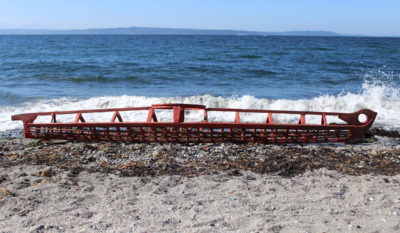
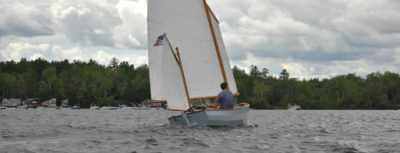

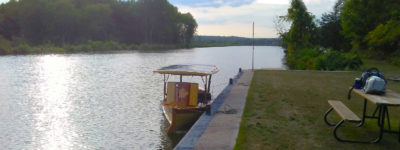
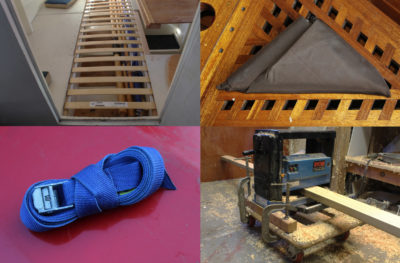
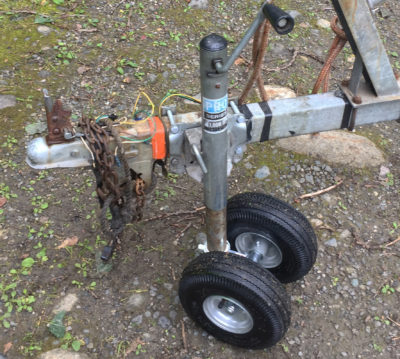
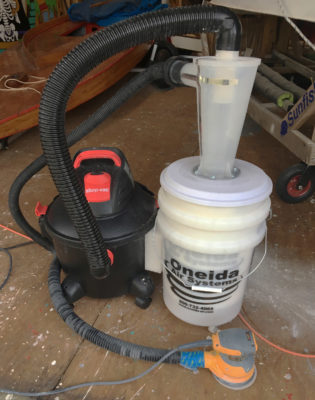
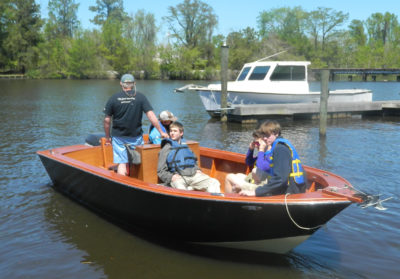

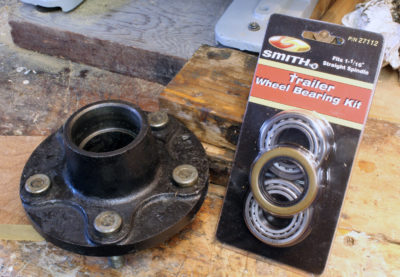
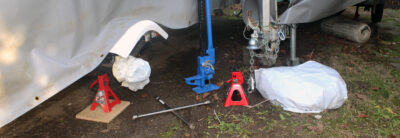
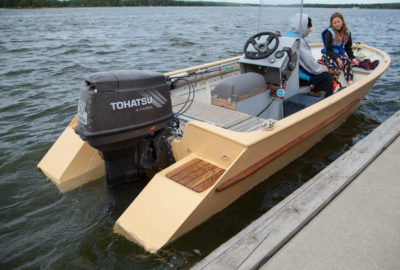
I’ll have to try the strap coiling method. I’ve been doing the hard coil: double the strap, tucking the end thru the opening at the back of the buckle with enough 6 inches or so of slack then rolling the strap up tightly from the double. The end then gets wrapped around the coil and secured in the buckle. These tightly coiled straps fit nicely in a plastic pound coffee container.
Some great tips, Chris. My favorite is the traveling planer. My shop is a good size but I find I still have to drag the planer outside to handle really long pieces. Well, no more! By the way, the video is cute, it reminds me of our Rumba vacuum cleaner.
Andrew
I did something similar to the Ikea slats for my Kurylko Alaska, HORNPIPE, except I made the slats to fit lengthwise, as HORNPIPE had no side benches. Worked well and, as you point out, took up a lot less room when stacked out of the way.
Well, the planer ‘trick’ is effective, and might be good for a single long board, but given it’s spewing shavings down the length of the shop, and can’t connect to a dust/shavings collector, I don’t think it’s practical.
Planing long stock with the mobile planer did make a bit of a mess in my basement shop, but my only alternative was to take the long-plank work outside. I usually do my boatbuilding in the winter, so I opted for sweeping. At the time, I didn’t have a dust-collection system nor a hose fitting on the planer, and the chips went out the back of the plane. It was easier to clean up that trail of chips than those shot out to the side as in the video.
Hi Chris,
Thanks for the strap coiling method. I just have to remember it the next time I use them! Flag-folding tarps is also a great idea. I learned the technique in the Boy Scouts; never thought to use it for another purpose.
Your strap-coiling method is a keeper! Thank you for describing it so completely.
I laughed aloud—in pleasure—at the little planer on a dolly. Love it. Sweeping residue is just messing with wood shavings and that has never been a problem for me. I will definitely use this tip.
Thanks, Chris.
Just a quick “thank you” for the strap-coiling instructions. Made it simple enough even I could do it! A great way to reduce the tangled mess. Thank you, and thanks to Russ as well – from someone else who remembers when computers used paper tape…
I like the strap coiling idea, and I’ll probably try it out, but I have a system of my own all worked out. It turns out that the straps I use, when coiled around the buckle, fit nicely in to a 26-ounce plastic peanut-butter jar. I now have the perfect excuse to keep eating peanut butter! Thanks for your tips!
I have been using the strap coiling method for several years coiling para cord when camping. By pulling the inside end to uncoil the cord, it never tangles. 50′ is the longest you can wind around your fingers. I have never tried it with straps, so that will be next. I have been coiling them around the buckle and then using a rubber band to keep them coiled, when I don’t lose them. Thanks for the tip.